Sanctions could drive a wedge between Iranians who focus inwards and hardliners committed to Iran’s bid for regional dominance. It is clearly in the interest of those who seek to bring about a drastic change in Iranian behavior to drive this wedge deeper by supporting the sanctions and raising the costs of revolutionary adventurism.
Domestic Politics and JCPOA Negotiations
The Islamic Republic of Iran has been facing ever-growing pressure since President Trump took office. Well before taking office, President Trump and his advisors had attacked the nuclear deal, one of the main legacies of the previous administration. After attempts to reach a framework agreement with Congress and the Europeans failed, the Trump administration declared in May that it was no longer bound by the nuclear deal (officially named the Joint Comprehensive Plan of Action, JCPOA). This meant that the sanctions imposed on Iran by the US in response to the former’s nuclear program will gradually be re-enforced. Some came into effect on 5 August 2018, while others, including sanctions on the oil trade, are due to begin in November. In light of these developments, this paper aims to assess the resilience of the Islamic Republic, which now faces external as well as internal pressures.
Since the end of the war with Iraq in 1988, Iran’s leadership has been divided between forces that urged the consolidation of domestic power and stabilization of Iran’s economy and others that were unwilling to focus inwardly at the expense of efforts to influence the region by proxies (such as Hizballah in Lebanon and, more recently, the Houthis in Yemen). Questions of prioritization and resource allocation for domestic versus extra-territorial activities are often associated with political camps that outside observers have termed “conservatives” and “moderates” (or pragmatists). The Supreme Leader, Ayatollah Khamenei, has mostly sided with the conservatives, but he alternated between the two when Iran faced harsh sanctions in 2012. He did so in a manner that retained his image as a hardliner while allowing the moderates to lead the way to the JCPOA with the Rouhani administration. This turned out to be a prudent move politically because it released Khamenei from accountability and left him an opening to attack the agreement and its proponents.
A closer examination suggests that Iran’s participation in the talks was enabled by a convergence of interests between its two economic camps, which overcame other ideological obstacles to participation in purposeful negotiations (mainly the centrality of religion in everyday politics) and collaborated on the basis of a shared interest in bringing urgent economic relief to Iran.
Recent years have seen a shift in this regard: while the interventionist camp has prevailed with respect to Iran’s foreign policy, the moderates also have had a few successes, such as the election of President Rouhani (2013, and then again in 2017). Rouhani, who led the talks on the nuclear deal with the 5+1 powers, represents the political forces within Iran that seek greater normalization with the West and other countries. Despite some (subtle) ideological differences, Rouhani has been tacitly approved by the Supreme Leader and his associates because of his usefulness for the national and revolutionary interest as they see it.
Beyond the accusations occasionally leveled at Rouhani and his delegate to the negotiations, Zarif, for being “too soft,” there was actually a tacit division of labor, whereby the hardliners used Rouhani as a means to improve Iran’s economic situation while maintaining their policy of foreign intervention in Syria and elsewhere. Contrary to the political rhetoric of both camps, the dynamic has been that of spheres of influence, with the hardliners leading the intervention and overseeing support from allies in the region (Syria and Yemen, to name two), while the Rouhani administration led Iran’s more official foreign policy, aimed at increasing trade with the outside world, mainly the EU, Russia, and China. Consequently, Rouhani’s main “ticket” is the economic status of the everyday Iranian citizen. This bodes ill for him at this point, for two reasons.
Firstly, years of economic sanctions have left their mark, and even under ideal conditions of booming foreign trade, it will take Iran many more years to recuperate. Sanctions have also affected the Iranian economy in a more latent way, in terms of its relative self-sufficiency. Out of necessity Iran has had to provide for itself (auto parts, for example). This has bred a system of narrow economic interests among Iranian companies, many of which are run by former members of the Islamic Revolutionary Guard Corps (IRGC), and their interests are threatened by the prospect of an open Iranian economy. These circles, which have the ear of the Supreme Leader, are likely to exploit the resumption of sanctions and even try to topple Rouhani, replacing him with a candidate of their own. They can only do so, however, with the approval of Khamenei.
Moreover, when analyzing the prospects for a change of political leadership in Iran in light of economic pressures, it is important to bear in mind the porous nature of the Iranian political map. The parties and political alliances are ad hoc and do not represent solid social or political organizations. It is therefore not hard to imagine a possible realignment of politicians around a more “hardline” politician. After all, it was mainly due to political benefits that Iran demonstrated some flexibility on the nuclear question at the negotiating table (given that it has not abandoned its pursuit of a military nuclear capability in the long run). If this shift does not yield results, as things now stand there is a strong case for reexamining it – and undermining those who advocated it.
In short, the renewal of sanctions poses a real, imminent threat to Rouhani’s presidency. This could either lead Iran to consider returning to the table for a new deal or bring Rouhani’s term to an end, exacerbating internal tensions. The likelihood of the latter depends to a large degree on the pressure created by sanctions and especially on the cooperation (or the lack thereof) of the EU and other players that are committed to JCPOA.
Iran’s regional challenges
The Islamic Republic faces challenges on two fronts, internally and externally. This section will focus on the latter. From its inception, the Islamic Republic operated under two banners, representing the leading principles of its raison d’etre: serving as a beacon for Shi’a around the world and spreading their faith wherever possible, and representing the ideal Islamic state, a model for all Muslims of a modern theocracy. Broadly speaking, then, one can identify two political camps in the Islamic Republic: an expansionist camp that regards the interests of Iran’s allies (especially its Shi’ite satellite communities) as paramount in setting foreign policy, and a second camp that calls for a rather more inward-looking policy and for downplaying Iran’s involvement in neighboring countries and the Muslim world at large.
Over the years, the aspiration to export the revolution has led to greater tension between Iran and its neighbors, most of which are predominantly Sunni (or ruled by Sunni elites). Its bloody conflict with Iraq and its ongoing animosity with Saudi Arabia are two prominent examples. Although Iran’s ambitions are often depicted in religious or sectarian terms, a closer look reveals a more complex picture: whether intentionally or not, the Islamic Republic has leveraged its cultivation of Shi’ite communities in the region to assist it in furthering its interests in the Middle East. In other words, the ideological “dilemma” has been mitigated by one side (the expansionist camp) having the upper hand, and by its rather successful claim that Iran’s foreign satellites render a valuable service. Thus what was allegedly an a-national policy has taken center-stage, portrayed by most of the political elite as a means of defending national interests.
Two examples illustrate this point: The Saudi-American alliance has been targeted as the greatest threat to Iran. Both the Saudi influence and the American military presence in the Gulf are anathema to the leadership of the Islamic Republic. However, often this animosity is expressed in broad ideological terms as a threat to the region posed by these countries, rather than a Sunni threat to Shi’ite Iran. Iran has even tried to use its geographical asset of the Straits of Hormoz to threaten some of its neighbors that are allied with the US, to no avail.
The second example is the unfolding of the Syrian crisis, which has exposed, yet again, the great advantage of having Hizballah as Iran’s long arm in Lebanon (and if need be, in Syria as well). Hizballah has suffered significant blows from the Syrian rebels, yet it proved to be a very efficient force in stemming the rebels and undermining their efforts to hold onto territories in various parts of the country.
Iran’s allies in the region have alarmed its (mainly Arab) neighbors, which since the rise of the Islamic Republic have warned of an impending “new Persian Empire” or “Shi’ite Crescent.” The use of loyal proxies underscores Iran’s great advantage over its nemesis, Saudi Arabia. While the Islamic Republic has continuously been weaving a web of allies and cronies over some four decades, the Saudi kingdom, despite its great resources, has few allies on which it can count. The loyalty of its few, temporary allies is precarious and fragile. Saudi efforts to change that and isolate Iran from its Gulf neighbors have so far achieved only limited success.
A comparison between Iran’s success and Saudi Arabia’s failed attempts to enlist allies suggests that the main difference lies in the nature of their involvement in the countries they seek to add to their orbit of influence: while the Islamic Republic sends advisors, often followed by propaganda experts who lend the struggle a religious dimension, the Saudis try to “buy” their allies by sending checks, without any other form of involvement whatsoever. The sole exception in this regard is Yemen, where Saudi and UAE forces are now fighting and suffering casualties. Elsewhere, the Saudis remain aloof and almost completely absent – specifically in Syria, where they tried and failed to fight Iran by proxy.
Another challenge Iran has been facing is that posed by Israel. Instances of limited active warfare between the two countries have recently come to light, with Israeli attacks on Iranian depots and units in Syria in 2018, following a pattern that existed less overtly during 2017. Most likely Iran was not seeking such a collision, but rather hoping that with Assad now fully back in power, Israel would have to accept its presence in Syria. Tehran was surprised by Israel’s persistence in preventing Iran’s military presence (though not necessarily other kinds of presence), and especially by Israel’s success in making a point to Assad’s Russian patrons, on whom the Iranian leadership had counted for protection. While Iran apparently received the message, it not about to abandon the Syrian front and will probably refocus its efforts to supplement its forces’ presence with a non-military element, such as by providing local mosques and charities with funding and personnel to fill the depleted ranks.
Until recent months, therefore, there was little room to challenge the strategic benefits that the proxy policy provided for Iran, whether viewed in religious-revolutionary terms or as tools in a wider strategic game. Iran could point to several significant achievements in the region in recent years: the return of Syria to Assad’s control, Hizballah’s survival despite the heavy blows it suffered during the Syrian civil war, involvement in some African countries, the Yemeni uprising, and the war against ISIS (which Iran counted as one of its successes). At this point, however, some questions arise. Iran has not been able to establish its presence in Syria to the degree it had planned. Hizballah has lost whatever attraction it had for non-Shi’ites (despite its political alignment with the Maronite leadership in Lebanon). The cost of the wars, particularly in Yemen, keeps mounting. Israel has been able to act against Iran in Syria without antagonizing Putin. And now the effort to sustain its allies and proxies must proceed alongside attempts to contain the renewed sanctions imposed by the US. Some Europeans have already pointed out to Tehran that there is a contradiction between avoidance of sanctions as a primary goal of Iranian foreign policy, and Iran’s ongoing subversive efforts in the region. The policy debate and dilemmas are becoming starker, with potentially de-stabilizing consequences.
Destabilizing Factors in Iran
Domestically, Iran has been facing two significant challenges that existed even before the demonstrations following the renewal of sanctions in early August. The first has to do with minorities: this explains Iran’s deep suspicion towards Azerbaijan (which shares an ethnicity with Iran’s largest non-Persian ethnic group), its tacit understandings with Turkey regarding the Kurdish question, and its fear of Saudi influence over the Arab population in the southern province of Khuzestan (called Arabestan by many Arabs in the region), where riots broke out in March 2018. These are compounded by occasional unrest in the eastern provinces of Baluchistan and Luristan. All are good examples of Iran’s sensitiveness vis-à-vis ethnic groups and the ingrained suspicion towards the central authorities on the part of some inhabitants of the peripheries (in both the ethnic and the geographic sense).
By far the greatest challenge to the regime in Iran, however, is its economic situation. Even before its currency drastically depreciated, following President Trump’s withdrawal from JCPOA, many Iranians of the middle and lower classes were facing financial hardship. Buying power has decreased by 15% in the last decade, proving that the political upheavals and “reforms” have not changed the economic realities. Indeed, it was in response to this state of affairs that Iran has strived to lower the costs of its foreign policy, avoiding further antagonism of the type in which President Ahmadinejad excelled. The election of Rouhani to two terms and pursuit of the nuclear deal were both signs of this trend, and both happened with the approval (even if little enthusiasm was involved) of Ayatollah Khamenei. Far from a reformist message, these choices reflected the priorities of the Supreme Leader, whose view is that a nuclear option is Iran’s right but, in light of massive economic pressure, can be postponed to a later date. In other words, if the development of a nuclear option does not serve Iranian interests, it can take a backseat for a while.
Three years into the nuclear deal, which is on the verge of being renewed, there seems no reason to believe that the Islamic Republic is in imminent danger of a political upheaval. In fact, it has proven to be resilient to internal unrest, whether stemming from economic hardship, ethnic unrest, or a demand for more political freedom. Pursuing a divide and rule policy, posing the poorer classes against the reformists (alongside direct suppression of the latter), has proven effective, despite the considerable challenges of high unemployment, desire for more freedom, and the unrest that ensues from what seems like increased intervention by the IRGC in domestic politics. Khamenei has handled social unrest through a combination of incitement against protestors and an open ear for major complaints that need to be addressed. This two-pronged approach has so far been successful in containing the social and political voices of dissent. But as the challenges keep mounting, the coherence of these policies may begin to fray.
The deployment of security forces (IRGC, Basij) against students and other groups of occasional protesters has brutally reduced motivation to organize on a national scale. The regime has succeeded in isolating the politically motivated opposition and in providing money at critical moments. Its effectiveness stems from the lack of support among the lower classes (some of whom participated in ad hoc strikes and protests) for the reformist agenda. They are not committed to reforming the political system or changing the role of the Supreme Leader, a fact that prevents the formation of a viable opposition to the regime.
The internal challenges arise from two main grievances among wide sectors of Iranian society: economic failures that generate concern among the merchant classes, and deprivation among the underprivileged classes in Iran’s peripheries (often with an ethnic element to their protest). In addition, there have been sporadic protests calling for more freedom and gender equality. In this context, a series of protests during the past year and a half-expressed anger over the harsh economic realities of Iranian middle and lower classes. The riots came as a surprise to some, considering the lifting of the sanctions that had devastated the Iranian economy in the years prior to the nuclear agreement between Iran and the 5+1. However, they come as less of a shock if one considers the following elements, which also reflect two of the three main domestic challenges facing the Islamic Republic.
The cutting of subsidies, which began during Ahmadinejad’s second term and later accelerated, drove ever more Iranians from the lower rungs of the socio-economic ladder towards severe hardship. Growing economic ties with China meant greater quantities of imports and further marginalization of local producers. These, in turn, reduced production, which lowered the cost of labor and, indeed, endangered the livelihood of many blue-collar workers.
During 2017-2018 there were numerous strikes and protests in Iran, often followed by clashes between protesters and police forces. For instance, in December 2017 mass demonstrations erupted in the city of Mashhad, spreading quickly to other urban centers, including the capital, Tehran. In Ghahderijan, in the province of Isfahan, six protesters were killed in an attempt to storm the local police station. What inspired the demonstrations was the combined effect of soaring prices of food staples (such as eggs and poultry) coupled with growing disappointment in Rouhani’s administration, which seemed either unwilling or unable to change government standards. These coincided with protests of a different, though not entirely unrelated, nature by women who opposed the state-imposed dress code. More than any other symbol, the hejab, or headscarf, became the focal point of these protests. Social media networks showed women of various backgrounds unveiling in protest and being harassed by Basij recruits or policemen.
Another trigger of the December 2017 riots was the budget proposal submitted to the Parliament by Rouhani, signaling his retreat from any policy of change he might have previously entertained. The proposed budget reflected nothing less than outright conservatism: it combined funding for hardline organizations with subsidy cuts for food staples. Exacerbated by a proposed increase in gas prices, frustration soared among the middle and lower middle class.
A renewed source of unrest in August 2018 has been ethnically and provincially based demonstrations. These are not unrelated to the economic plight described above, but they include groups whose hardship reminds them of their marginality in the state and society. The province of Ahvaz saw recurring unrest when residents, mainly from Arab nations, took to the streets. The trigger was a children’s TV show that displayed various ethnic groups in Iran in traditional attire but omitted the local Arab population. To add insult to injury, the puppets in the show seemed to mock the accent of the Ahvazis, with its traces of colloquial Arabic. This was perceived as yet another sign of the marginalization of the province and its inhabitants and of further estrangement between the political center in Tehran and the province.
Lastly, the Islamic Republic faces another challenge that has been haunting it since the end of the previous millennium: protests, mainly by young people, including many women, whose alienation from the political system and the norms it aims to impose in the public sphere has been growing for two decades. This opposition, unlike that of the workers mentioned earlier, has an ideological framework by which to express its unsettling reality. These people interpret their personal hardship as stemming from the failures of the Islamic Republic’s political system and voice their wish to overthrow the entire system.
However, two important issues prevent this social unrest from fomenting a viable opposition that would threaten the political order in Iran: firstly, the blue-collar workers and the students and reformists are not united. They belong to two separate strata, not only in the political sphere, but also in the social and religious spheres. While the students protest their lack of freedom and the political maneuvers of the powers-that-be, the workers do not necessarily have a clear opinion on these issues. Many are more likely to belong to a rather conservative milieu than to reformist circles. More importantly, the youth themselves are divided along the lines of two separate sources of motivation: lack of economic stability and (for many) vague economic prospects. In this regard they share the grievances of millennials in the Arab world and even the West. Regardless of the separate causes of unrest among the youth, however, they do seem to express their dissatisfaction often and in political terms, calling for an alternative to the political order in Iran. The blue-collar workers, on the other hand, do not necessarily share the frustration with the political aspects of the system, and their protests are much more specific and ad hoc.
The main weakness is in the lack of a political figure to rally around, one who could boil the anger down to a political program. This weakness is to a large degree an outcome of the way the 2009 riots were crushed. The protests, triggered by presidential election fraud, marked the last time the Islamic Republic faced significant unrest. Notably, both political leaders of that protest (and candidates in the elections) have been under house arrest for nine years now. The reformist opposition has not recovered from this confrontation with the conservative elements headed by the Supreme Leader Khamenei.
Distinguishing economic grievances from political ones is not easy, especially in Iran, where government-affiliated bodies run more than two thirds of the economy. The great challenge that protesters and the opposition have yet to achieve is to convince a significant portion of the population of the strong linkage between the political order and the economic plight of the average Iranian.
Rouhani’s government enjoys the safe environment provided by the Supreme Leader, despite tensions between the two. The climate that the conservative elements provide places Rouhani and other more lenient political players as demarcations of the extent to which the Islamic Republic can bend towards the West, which in turn lends them strong support in the event of Western demands regarding Iran’s policy on nuclear or related matters.
Despite currency devaluation and high unemployment, the Iranian economy is better off than it was in the years preceding the JCPOA, when it faced sanctions. During the year after the nuclear accord was signed and international sanctions were lifted, from the spring of 2016 through the spring of 2017, the economy surged by 16%. Despite efforts by the EU to keep trade with Iran at these levels, the Iranian economy will slow down and even decline in the face of renewed sanctions. Oil prices will play a role in Iran’s efforts to overcome economic hardships. This will add yet another element of tension between Iran and the Saudis as two competing oil producers.
Notwithstanding American efforts to limit the scope of economic trade between the EU and Iran, it has shown some significant growth in the last two years. In the struggle to maintain a growing trade with the EU, President Rouhani and Zarif attended a series of meetings with European leaders (July 2018) to gauge the chances of relaxing the terms of the deal and try to prevent it in any way possible. One advantage for Iran is the tension that currently exists between the White House and other Western countries, such as Canada and Germany, just as it did in the four years preceding the JCPOA.
France, Belgium, Italy, and other European countries have been developing trade channels that circumvent US currency and banks, a move that is now being put to the test, as the US has retreated from the nuclear deal. This is a great challenge to President Trump’s resumption of the sanctions.
The rallies that have been recurring in Iran in the last two years began as protests against inflation, work conditions, and more recently, insufficient infrastructure. Prices of food staples are naturally the most sensitive aspect of the economic situation and add to the sense of insecurity among most Iranians in the middle and lower classes. Moreover, the ruling class (both clerics and the higher echelons of the Revolutionary Guards) are seen as having secured themselves against the impact of economic hardship. The current 4% growth is mainly a result of increased petroleum sales now that international sanctions have been lifted, and of oil prices having stabilized at $60-70 a barrel. Petroleum proceeds go directly to the government, that is, to the ruling clerics, who head up a range of foundations and businesses that receive government subsidies.
President Hassan Rouhani released budgetary figures in March that revealed the extent of government support for clerical foundations, angering workers who not only do not receive subsidies but have seen their buying power plummet in recent months. Rouhani put a lot of political capital behind the JCPOA, on the grounds that it would end sanctions and improve the economy, which had been under considerable pressure during the final phase of sanctions. Despite the voices of dissent in Iran, which occasionally have a public presence, it is the opinion of this writer that these do not pose a threat to the political system as a whole, nor do they guarantee a significant change in foreign policy in the long run. On the domestic front these demonstrations are either downplayed as mere attempts by Iran’s enemies to weaken it (as Supreme Leader Khamenei often claims) or, in the case of President Rouhani, they are contained as part of the challenges faced by the state, in a manner that demands a “more of the same” policy. There is little on which those who await another revolution in Iran can rely. Moreover, any potentially effective opposition leader is either under house arrest or intimidated, which leaves demonstrators with a myriad of directions but no cohesive political agenda or agreed leadership. Their potential for translating their everyday grievances, be they economic or political, into action is all but non-existent. Yet the pressure of sanctions can have a dramatic impact, insofar as it will bring to a head the internal policy tensions within the regime over strategic priorities and indeed over Iran’s identity: a revolutionary project or a “normal” state.
The JCPOA and Iranian Politics
The American withdrawal from the nuclear deal in May thus drove Iran into a tight corner, despite assertions to the contrary. Iran is waiting (in apparent tension) for the European reaction, which as of now seems favorable to the deal and shows no signs of abandoning it. Furthermore, the wider picture is more favorable to Iran than it had been before the nuclear deal, since its trade does not depend solely on the West but includes India, Russia, and China as partners. Although far from insignificant, an American ban on trade with Iran will likely have only partial results.
The growing pressure on Iran with respect to the nuclear deal pushes it in two mutually balancing (or possibly contradictory) directions. On the one hand, it increases the pressure on an already strained economy, with its weak currency and a buying power that has been declining over the past decade. This became evident when the national bank of Iran announced official currency rates, which seemed like a desperate attempt at policing monetary exchange on the streets. The national bank’s agenda became even more apparent when one cleric actually suggested executing money changers who do not adhere to the official exchange rate. The witch hunt for “corrupt financiers” attests to the degree of alarm within the establishment resulting from the downwardly spiraling value of the local currency.
On the other hand, the resumption of sanctions has the effect of empowering the more intransigent elements in the Iranian establishment, who objected to the agreement in the first place. They have benefitted from the sanctions because their conglomerate, Khotam al Anbiyyah, did not have to face competition for government projects. They were not enthusiastic about foreign companies investing in Iran, despite reaping some benefits from these contracts as well (as they depend on government expenditure at large). In fact, the greatest challenge to the Trump administration’s policy of resuming sanctions on Iran might be to prevent the perseverance of those circles close to the IRGC that endure despite the tightening noose on Iran’s economy. One important achievement of this policy can already be noted: the public discourse in political circles over the IRGC’s deep involvement in the Iranian economy. This has mostly been a taboo topic and source of unease in conservative circles because it attacks a pillar of the political system, albeit one with no official recognition or legitimacy. Unlike the Supreme Leader, for instance, whose position is sanctioned by the constitution, the IRGC’s role in the economy was an unintended byproduct of the system and has never been challenged. It does, however, touch upon the people closest to the Supreme Leader and many other political figures in the Islamic Republic.
President Rouhani has in the past conveyed the rise in self-confidence of the Islamic Republic, saying that the US sees Iran as the only country in the region that can fight terrorism. Indeed, if there is one thing about which Rouhani can boast, it is his maximal leveraging of the terror ISIS inflicts around the world, presenting Iran as a deus ex machina that saves the region and the wider world from Islamic lunatics. This is one of the main lessons the Islamic Republic has drawn from the willingness of the US to reach an agreement with it over its nuclear program.
This view, however, was challenged and even shattered with President Trump’s renewal of sanctions, if only to a degree. For the time being, not only have China and Russia refrained from joining the US, but there seem to be more rifts than ever among Western countries in this regard. It remains to be seen how Iran’s economy will deal with the threat of an ever-tightening noose around its neck after November: European corporations, regardless of what their governments may say, are already jumping ship. Moreover, at least some European leaders have accepted the notion of relaxing the deal and improving some of its terms. Yet it also remains to be seen how much influence these leaders (such as France’s President Macron) will have over their partners in the EU. One of the key terms they want Iran to accept is a curbing of its policy in the region.
Implications of Iran’s Regional Policy towards Israel and the West
The Islamic Republic’s hostility towards Israel is rooted in a deep ideological conviction that involves anti-Semitic elements, together with the bitter memory of Israel’s alliance with the last Shah of Iran. In addition, it serves both external and domestic needs. President Ahmadinejad (2005-2013) stepped up Iran’s anti-Israel propaganda, an approach Ayatollah Khamenei supported from his pulpit. Israel is depicted in Iranian propaganda as a colonialist invader that as such should be expelled from the region. Iran, as a regional leader in its own eyes, is at the forefront of efforts to realize this goal. It strives to fill the leadership gap in the Arab world, especially since the Arab Spring of 2010-2011. This cause is intrinsically connected with the other, utilitarian, reason for Iran’s struggle against Israel, namely, to win favor in the Arab world, which is mainly Sunni. Hatred towards Israel could serve as a bridge between Sunni and Shi’ite Islam, another goal to which the Islamic Republic has been committed (to varying degrees) since its inception.
However, this is no longer the main motivation behind Iran’s anti-Israel activities. The civil war in Syria revealed the change Iran has undergone in this regard in recent years. It would be hard to argue that Iran is bashing Israel to gain popularity in the Arab world these days. In fact, the renewed regime in Syria is anything but popular in the Arab street. It would be more accurate to think of the hostility towards Israel in somewhat existential terms, posing Israel as an enemy that threatens Iranian interests. Such was the explanation of Quds commanders to their soldiers fighting in Syria, and such was the rationale for direct attempts to attack Israeli targets in the Golan heights with a UAV in February 2018.
It is apparent that the legacy of President Ahmadinejad, coupled with the hardline policy of the Supreme Leader, has struck root in the decision-making process regarding Iran’s regional policy. In fact, it goes back to the 2011 resignation of former president Rafsanjani from the Assembly of Experts, when he sensed that he was being neutralized by the hardliners. This was a death knell for any pragmatic and quietist policy Iran could have exercised in the region.
One important element that completes this change has to do with the centrality of the Revolutionary Guards in Iran’s decision-making process. Having begun as a militia force responsible for keeping an eye on the military, it eventually became both a security and an intelligence powerhouse, as well as an economic leviathan whose interests far exceed the stability it was born to ensure. This organization has expanded both within and beyond Iran, serving as a direct branch of the Supreme Leader for tasks that can remain deniable by the official state apparatus. This is evidenced by the Quds force and its activities in Iraq (until 2014, when Suleimani appeared in public there) and in Syria.
The Israeli attacks on Iranian units and installations in the last four years have caused Iran to reconsider its steps. One cannot expect Iran to abandon its ambitions of a presence in Syria, but given the conditions of Israeli persistence and Russian ambivalence, it seems to be in a state of temporary compromise while it waits for an entry point in the very near future. Hizballah, having licked its wounds from the Syrian war, is a possible tool for reprisal, but for the time being it feels the need to keep its powder dry, as it did in the years preceding the Arab Spring.
As to the question of the JCPOA, Iran will do its best to hold on to it, as long as other countries to not join the US in withdrawing (as is the case for now). However, given American persistence and Washington’s leverage over companies trading with Iran, the cost of Tehran’s present policies will soon begin to mount, thus providing the US, Israel, and even some European players with an opportunity to sharpen the internal divide in Iran over basic priorities.
photo: Bigstock

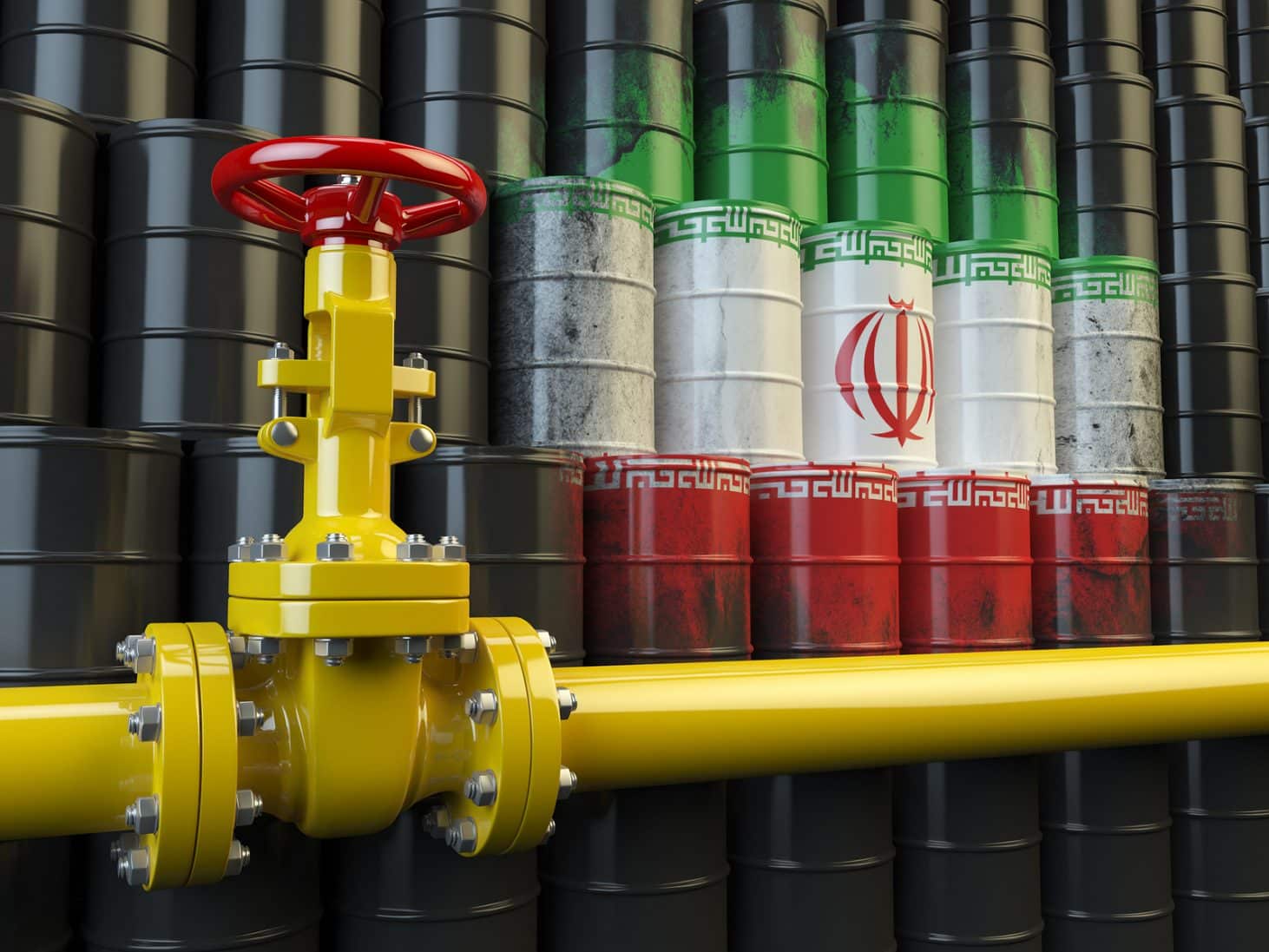
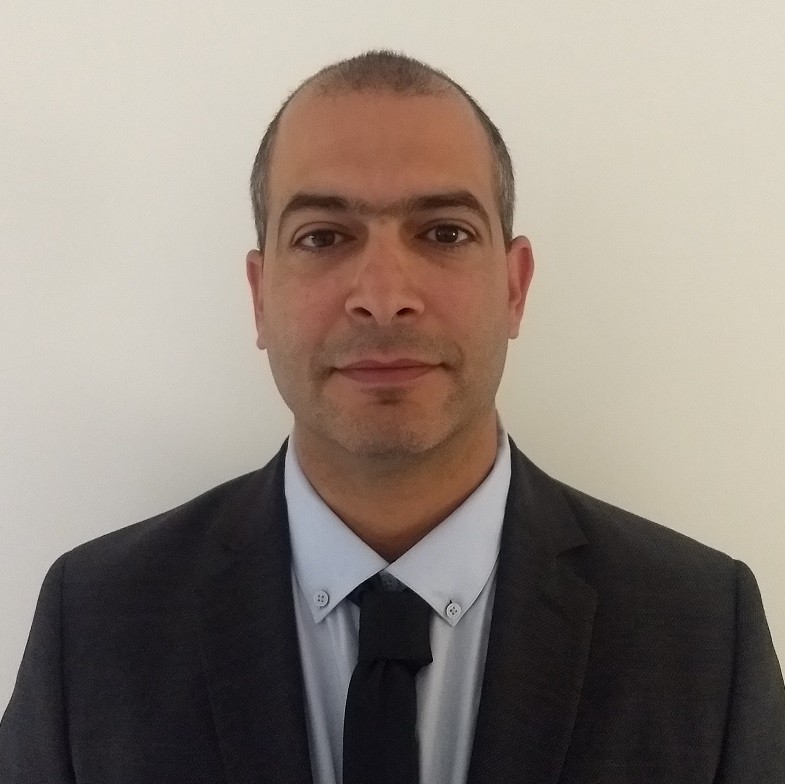
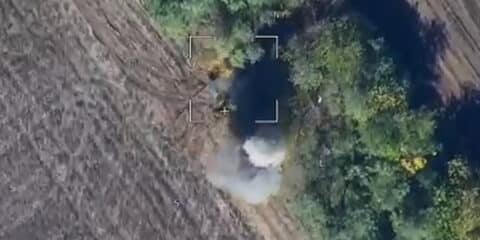

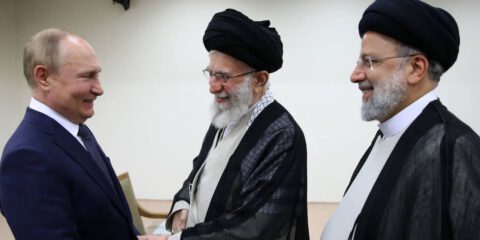

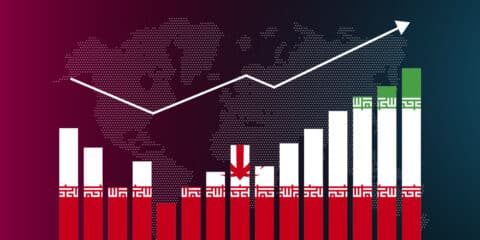

 - בניית אתרים
- בניית אתרים